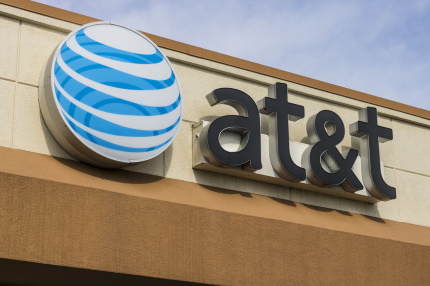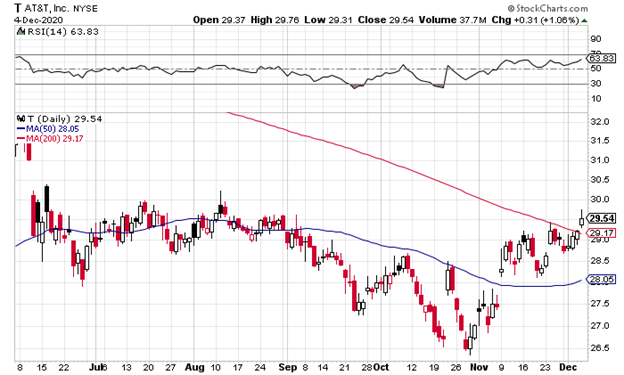Shares of AT&T (T) have struggled throughout 2020 after coming into the year just above the $39 level. The current 25% pullback has pushed the dividend yield above the 7% level despite the company’s fundamentals remaining quite strong.
Over the past four quarters, AT&T has reported solid profits 76, 79, 85 and 87 cents a share with two of the quarters topping Wall Street’s estimates and its most recent matching expectations. As far as revenue, the company will top $170 billion for 2020 with 2021 expected to net over $173 billion.

Some of the company’s key assets are WarnerMedia which includes the Warner Bros. Pictures film and television studios and U.S. cable/satellite channels such as, HBO, WarnerMedia Studios & Networks Group, Adult Swim, Boomerang, Cartoon Network, CNN, TBS, TNT, TruTV, and Turner Classic Movies.
There are 29 analysts that cover the stock with five Strong Buy ratings, four Buys, 19 Holds and one Sell rating.
AT&T had earlier talks over the summer to sell its DirecTV division and has been looking to have a deal signed by year-end. Final bids for this unit were due by this past Friday. There is also chatter the company is looking to sell CNN, as well. This could provide a significant structural change to its asset mix and would be a bullish development as the company looks to pay down some of its debt.
On the technical side, shares recently closed back above its 200-day moving average and appear to be making a solid run towards $30-$30.25. This area represents resistance from August and July. It the latter is cleared and held, a bullish breakout could continue into yearend with potential upside towards $32.50-$33 and levels from early June.

To take advantage of continued upside, option traders can target the AT&T January 30 calls. These options are currently trading at 55 cents and would double from current levels if shares are technically at $31.10 by January 15th and when the options expire.
If shares can make a push past $31.65, the aforementioned calls would be $1.65 “in-the-money” for a 200% return from current levels. These call options currently have five weeks before expiration and should provide enough time for the position to play out on continued momentum.
The risk to this trade would be if shares close back below $29 and where the current uptrend lies. This is just below the $29 level and the 200-day moving average. The 50-day moving average is also curling higher and is another technical bullish signal. To give the trade a little wiggle room, if shares fall below the $28.75 level, traders can exit the call options to save the remaining premium.
Conservative traders can look to buy the stock at current levels and sell the aforementioned option as a covered call trade. This would reduce the cost of the position towards the $29 level. Of course, this would limit the potential profit of the trade to 3% as the position would get “called away” if shares are above the $30 by mid-January. However, the current 52-cent dividend is scheduled to be paid out in early January and before the option expires. This would nudge up the return to 4% in five weeks.
If shares stay below $30 by mid-January, traders can look to sell an additional call option at, or above this level to continue to collect premium while maintaining a position in the stock.





